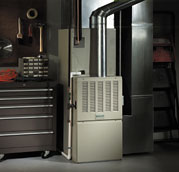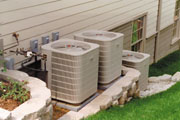Things are changing.
Thanks in part to a great economy these last few years, as well as increasing utility prices around the nation, average homeowners are looking for higher-efficiency equipment.
More and more states are talking about deregulation, and people are starting to think the California situation could come to their hometowns. If it does, homeowners want to be ready with equipment that will not cause their bills to skyrocket.
For contractors, this means not judging a book by its cover. Do you really know how much your customers can afford to spend? Do you really know what kind of system and accessories they would like to have?
Finally, do you know how to properly install the higher-priced equipment so that customers can achieve a return on their investment in a relatively short period of time?

Not Getting The Word Out
Chances are, many contractors would answer “yes” to those questions, when in reality the answer is “no.” Manufacturers and contractors both could do a better job in promoting more-expensive, higher-efficiency equipment, says Dennis Kloster, vice president, marketing and sales for residential and light commercial, Nordyne, St. Louis, MO.“A lot of the survey results show that if offered higher-efficiency equipment or zoning or better equipment for indoor air quality, the majority of consumers would opt to pay for it,” says Kloster. “But a lot of times the contractors are so leery, because they’re focused in on the price side only, that they don’t even offer it.”
What contractors might want to consider is going into a meeting with a customer with alternate proposals. One proposal could show a base system that would give the customer the least-expensive system possible to heat and/or cool the house from a first-cost perspective. The second proposal would list more energy-efficient equipment, as well as zoning, indoor air quality products, hum-idification, better filtration, etc.
Chances are that the two proposals will spur a discussion, giving the contractor an opportunity to explain why Proposal B costs more (sometimes twice as much) as Proposal A. The contractor can then explain that energy bills will be lower while occupant comfort will increase, particularly if IAQ options are added.
Kloster notes that his company is selling more product in higher-efficiency ranges. “There’s a gradual trend showing that more customers are opting for air conditioners in the 12- to 14-SEER range and furnaces in the 90%-AFUE range,” he said.

Matching Coils, Fixing Ductwork
But once a customer decides to purchase a high-end-efficiency hvac system, the buck doesn’t stop there. It is incumbent upon the contractor to make sure the new and expensive system is installed correctly, or the customer will not achieve the energy savings s/he expects to see.One of the biggest mistakes contractors make is not changing out the entire system if it’s a replacement job. “As an industry we’re getting better at that, but there are still a lot of replacement jobs where contractors change the outdoor unit but not the indoor unit, and that’s cheating the homeowner,” says Kloster.
That’s because if customers buy a 12-SEER condensing unit, but they keep the 10-year-old coil on the indoor side of the system, the savings will be nowhere near what’s expected. Then it doesn’t make sense for customers to pay all that extra money to go from a 10- to a 12-SEER unit, because the system will not achieve a 12-SEER rating. And how would you like to field the phone calls from that angry customer?
The other big issue that plagues the industry is leakage from the ductwork. Contractors can replace the outdoor unit and the indoor unit with an expensive system and put in extensive filtration, but if the customer has leaks throughout the ductwork, the system will simply pump cold air into the attic all summer long.
“Contractors need to do a thorough inspection of the ductwork. There are different ways to check the airflow, but it should be done,” says Kloster.
Noise is another issue contractors need to be aware of. When customers pay a lot of money for their higher-efficiency systems, they aren’t going to want to hear them turn on and off.
Again, it often comes down to the ductwork. If it’s not designed or laid out properly, it’s going to create more noise. Kloster recommends that contractors use any one of a number of software programs out there to help ensure that ductwork is laid out correctly.
In the end, don’t be afraid to sell your customers more-expensive, higher-efficiency equipment. “If contractors offered their customers a choice, they’d be shocked to see how many times the consumer would take the higher-end offer — which is a great way for them to differentiate themselves from everybody else in the pack,” says Kloster.
Publication date: 08/20/2001


Report Abusive Comment